What To Do In Your Tucson-Area Yard in May
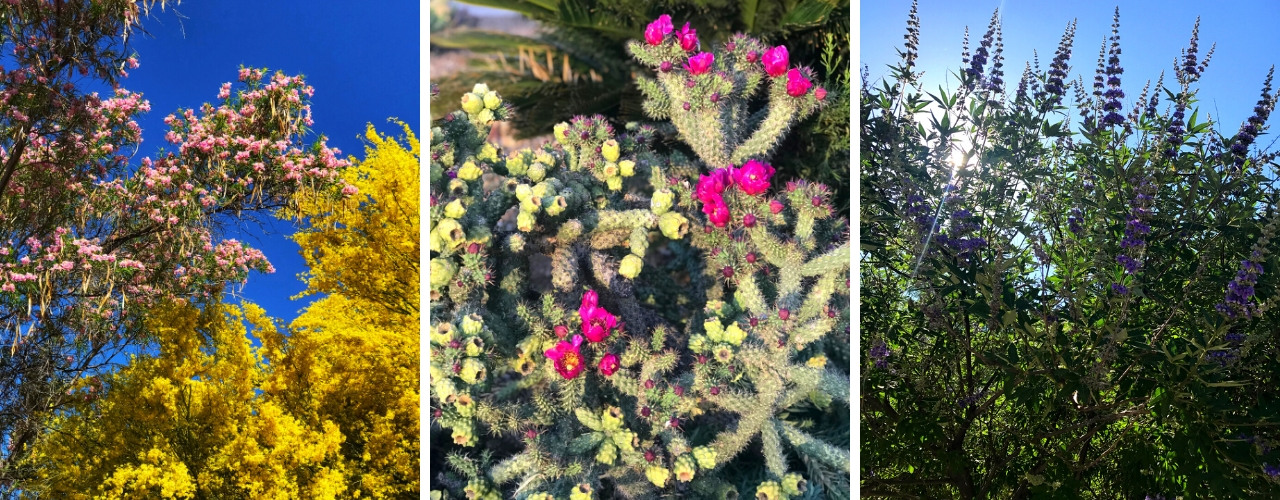
May brings lots of spring blooms to Tucson. From left to right: desert willow, palo verde, cholla, and a chaste tree.
The temperatures really begin to rise in May, and 100+ degrees outside is not unusual. For the next few months, you will need to ensure that your yard and garden stay cool, watered, and shaded as best as you can.
Well-established native plants and trees will ride out the high temperatures just fine. However, newly-planted perennials, shrubs, and trees, as well as containers and vegetable gardens, will need some extra care and attention.
Here’s what to do in your Tucson-area yard and garden during the month of May.
Enjoy the blooms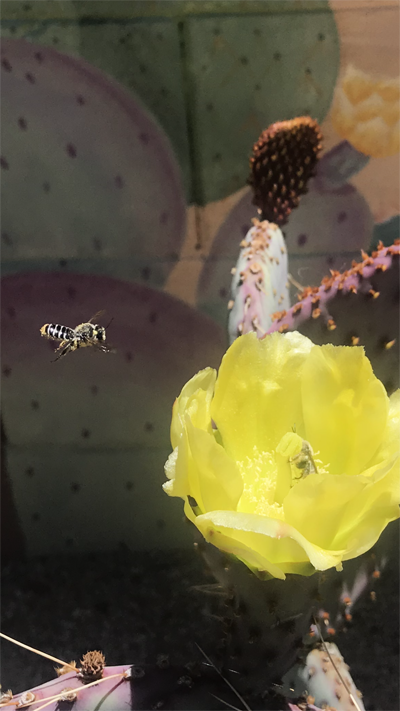
Many native trees are showing off their beautiful blooms this time of year. You may notice palo verde trees, desert willows, sweet acacia trees, and others with various colors and shapes of flowers.
Cactus, too, begin to bloom. Saguaro cactus may begin to bloom at the end of this month, but are more likely to bloom in June.
If you want even more flowers in your yard, now is a great time to add some summer perennials or warm-season annuals. Note that these will need more water than desert-adapted plants.
You can plant sunflowers through July if you want a pop of color and a unique way to add (some) shade.
Increase irrigation
Continue to water slowly and deeply, but you may need to increase the frequency of watering for established plants and shrubs.
Citrus trees will need more regular and consistent watering through the warmer temperature months as well.
Add mulch around trees and plants
May is a good time to add mulch around your trees and plants. Mulch is a great way to lower soil temperatures and keep your plants hydrated. However, make sure that:
- no mulch is touching the tree trunk or the plants (pull it back a few inches from the plant), and
- you’re not adding too much mulch (2 to 4 inches is plenty in most situations).
Refrain from making a “mulch volcano,” where mulch is piled up in a way that resembles, well, a volcano. Though you may see mulch used this way as you drive around town, it’s harmful to trees (yes, mulch volcanoes kill trees!).
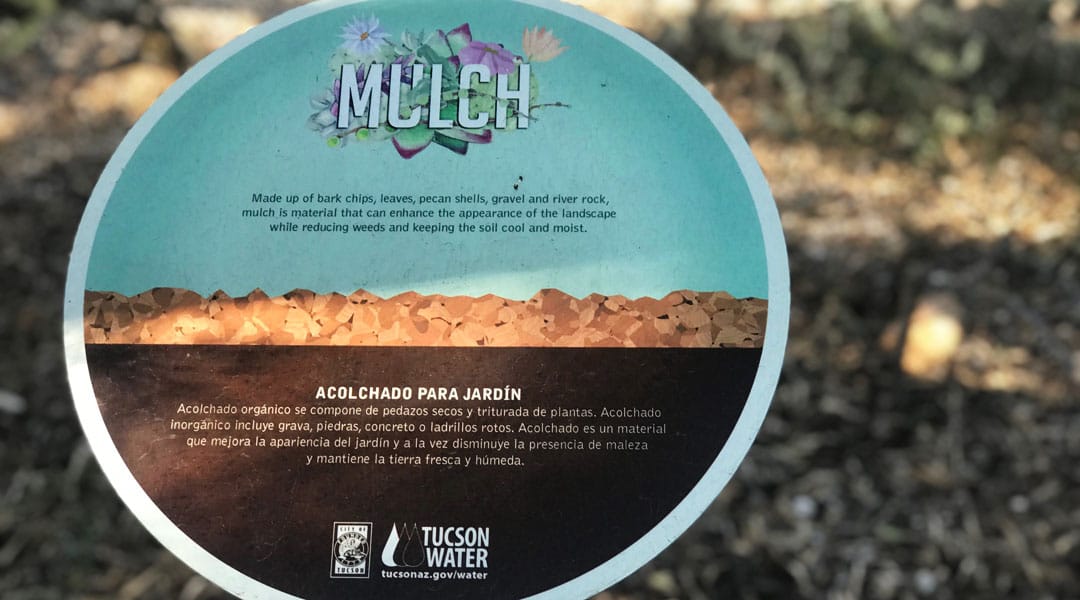
A sign about types of mulch found at the Tucson Botanical Gardens
Why use mulch?
Mulch is helpful in regulating the temperature of the soil (it can keep soil cooler during the blazing hot summer months). Organic mulch (made from things like shredded bark, wood chips, straw, compost, pine needles, pecan shells, etc.) will break down over time, adding organic material and nutrients to the soil for the trees and shrubs to absorb. A nice layer of mulch can also keep weeds from popping up between your other plants.
Care for your citrus
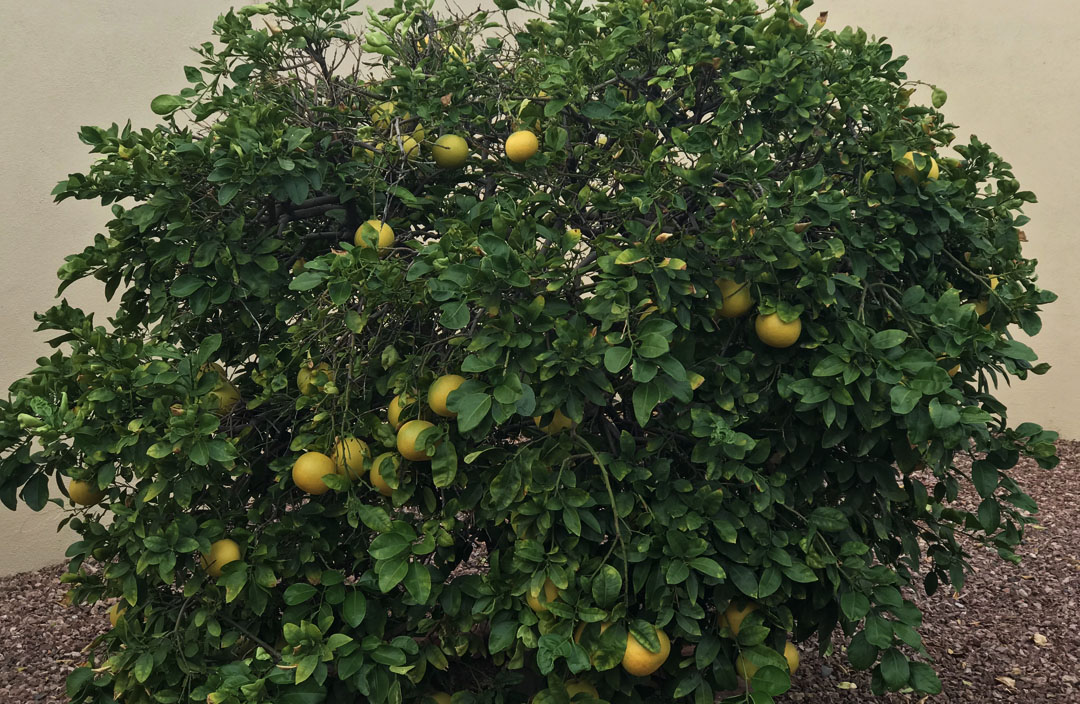 If you are following the recommended times of fertilizing your citrus trees (Valentine’s Day, Memorial Day, and Labor Day for citrus grown in-ground), make sure you are ready to fertilize towards the end of this month.
If you are following the recommended times of fertilizing your citrus trees (Valentine’s Day, Memorial Day, and Labor Day for citrus grown in-ground), make sure you are ready to fertilize towards the end of this month.
Citrus trees may drop their fruit this month, which is a normal part of the process. Clean up the fallen fruit to discourage pests. Minor pruning of citrus trees is okay but save extensive pruning for the cooler fall months.
Harvest fruit
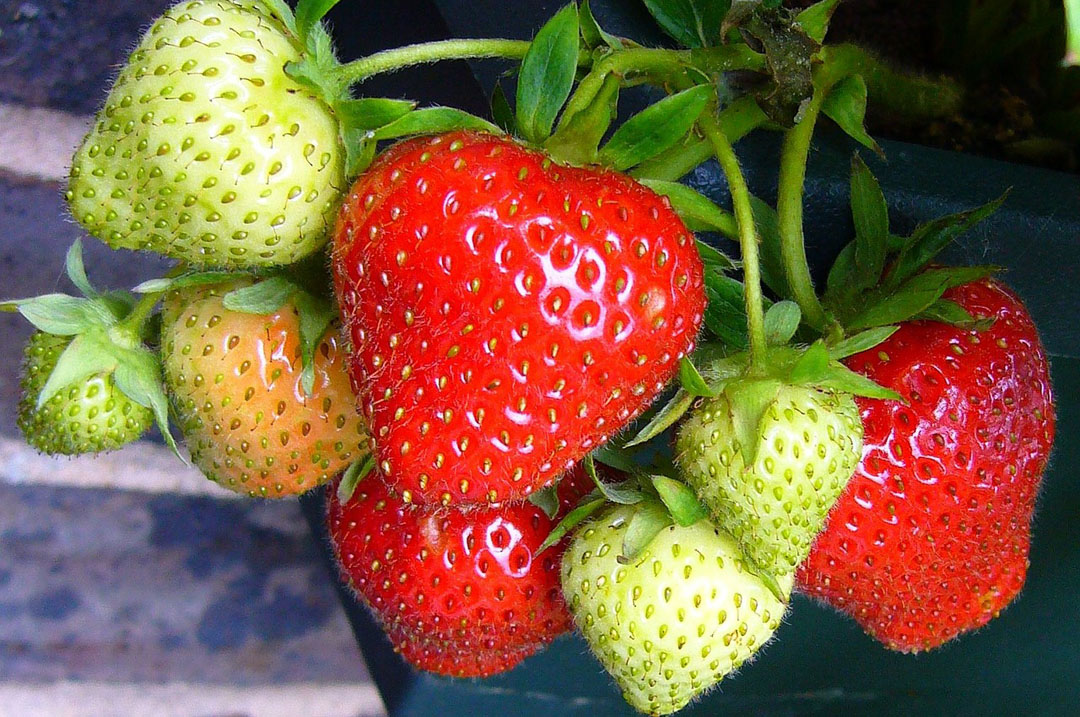 Blackberries and strawberries can be harvested (when ready) during the month of May. Because of the increased temperatures, be sure to water strawberries daily. If you have an apricot or peach tree, they may be ready to pick this month as well.
Blackberries and strawberries can be harvested (when ready) during the month of May. Because of the increased temperatures, be sure to water strawberries daily. If you have an apricot or peach tree, they may be ready to pick this month as well.
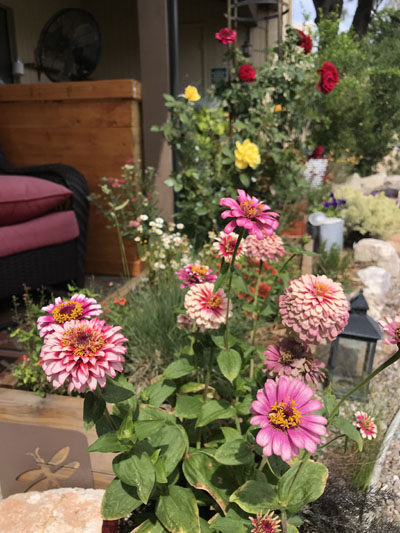
Flowers blooming in a Tucson garden in May
Sow or transplant herbs and vegetables
There are fewer types of vegetables that can be planted this month, but there are still some! Try getting them in the ground early in the month to give them a chance to establish before it gets too hot. If you’d like a larger crop, you may want to wait until the next planting season, when the monsoons arrive.
Before you plant anything new, be sure to harvest and remove your winter crops, as most winter-grown vegetables and herbs will not survive our summer heat.
Sow these from seed
- Lima beans
- Eggplants
- Peanuts
- Peppers
- Watermelon
- Cucumbers
- Squash
- Okra
- Edamame
- Amaranth
- Cantaloupe
- Armenian cucumber
- Black-eyed peas
- Basil
Plant these from slips
- Sweet potatoes
Tomatoes can be started from seed indoors to prepare for monsoon planting.
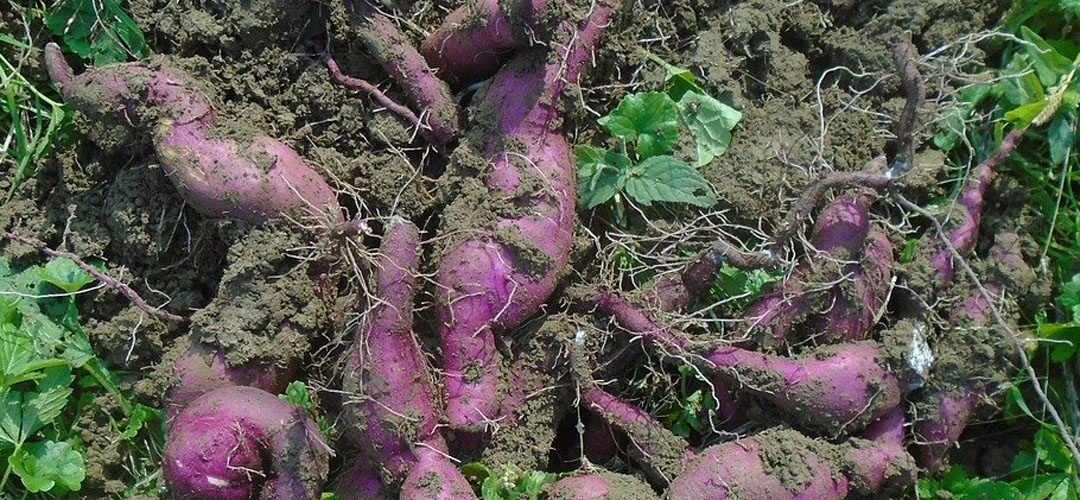 Add shade using shade cloth
Add shade using shade cloth
Many kinds of fruits, vegetables, plants, and flowers need shade to survive our summer heat. Use shade cloth or plan your garden in a shady area – afternoon shade is vital.
Most vegetables grown in Tucson will benefit from 40% to 50% UV-blocking shade cloth. Check the details on whatever shade cloth you buy – anything beyond 50% will likely block too much sun to be able to produce a good harvest of ripe vegetables or fruit.
If you’re looking for other ways to add shade to your Tucson yard, check out this blog post: How to Create Shade in Your Tucson Yard.

These plants, grown in a container in a Tucson yard, benefit from a shady area and a shade sail to help them survive the summer heat.
More bugs are out and about…
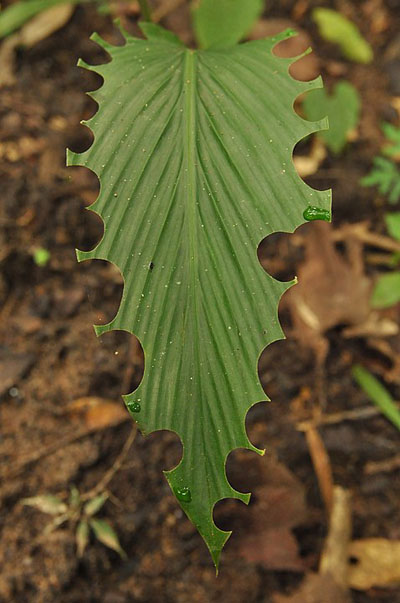
A leaf has semi-circle holes created by a leaf cutter bee. Photo by PJeganathan – Own work, CC BY-SA 4.0
If you’ve ever seen an agave collapse and die over the course of only a few weeks, it’s likely due to agave weevils (aka agave snout-nosed weevils). These shiny black beetles feed on agave and, in doing so, introduce bacteria that cause the plant to rot. The young beetles (larvae) eat the rotting tissues.
Once the process starts, there’s little you can do to save the plant. Immediately remove and destroy any collapsed agaves, including the roots. If you’ve had infestations in the past, sprinkle diazinon around uninfested plants during the spring to prevent adults from gaining access. The adult beetles emerge again in fall.
You may also notice round pieces cut out of leaves on roses and other ornamental plants. Don’t worry, it’s just the leafcutter bee taking a piece of leaf to line its nest. Although you may not like the look, it won’t harm your plants (the bees don’t take enough to do serious damage). There’s no “treatment” to stop this and, because bees are important pollinators, it’s best to let them be. If there are any plants you particularly want to protect, try covering them with a floating row cover for a few weeks.
Another common sighting in May is chewed up citrus leaves. If you look closely, you’ll see something that looks like bird droppings on the leaves. These are the larvae of the giant swallowtail butterfly, often called orange dog caterpillars. This is another case of an insect that causes only aesthetic damage; they only eat a few leaves during their lifetime and are susceptible to naturally occurring parasites and predators so control is not necessary. If you have a smaller citrus tree, you can minimize any damage by removing some of the eggs by hand before they hatch (just brush them off).
At night, you may see flying beetles swarming around outdoor lights. These beetles (called May beetles, June beetles, or chafer beetles) lay their eggs in soil, producing “white grubs” that feed on roots of grass and some annual plants. Many other types of grubs eat only decaying material in the soil, but white grubs can do significant damage. Try using beneficial nematodes for an organic control option or, if necessary, there are grub-killing pesticides available from lawn and garden supply stores.
We hope these tips help you enjoy your Tucson-area yard and garden this month! Have fun!